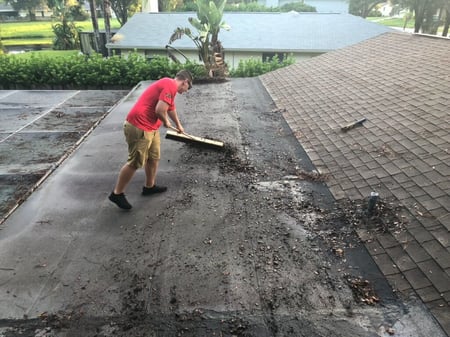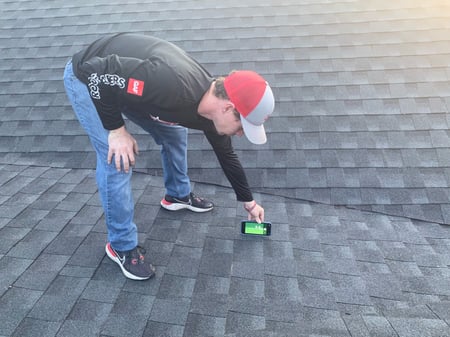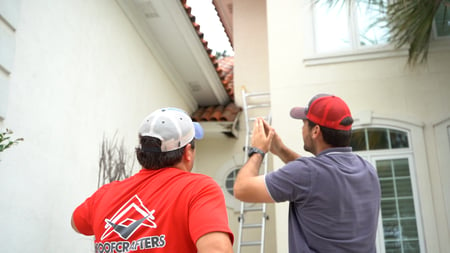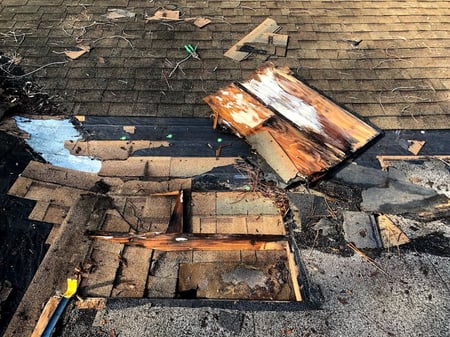How Often Should You Really Schedule Roof Maintenance?
September , 2024 | 6 min. read
By Kevin Mills

A roof is one of the most important parts of your home, but it often doesn’t get the attention it deserves. Like many of us homeowners, you probably only think about it when something goes wrong, like a leak or visible damage.
But here’s the thing: At RoofCrafters, we know that regular roof maintenance is key to extending its lifespan and saving you from costly repairs down the line. So, the big question is: how often does my roof really need maintenance?
Well, dear reader, that's a great question! In this article, we’ll dive into how often you should schedule roof maintenance, why it’s crucial, and what you can do to keep your roof in tip-top shape. Whether you have a shingle, metal, or flat roof, we’ve got practical advice for every type. Let’s get started!
Why Regular Roof Maintenance Matters

Before we jump into the “how often,” let’s quickly touch on the “why.”
Your roof is exposed to the elements every single day. From blistering sun and heavy rain to gusty winds and, depending on where you live, maybe even snow and ice. Over time, these elements can cause wear and tear on your roof. Small issues like loose shingles, cracks, or clogged gutters can escalate into major problems if left unattended.
Regular maintenance catches these minor issues early, preventing them from becoming expensive repairs, or even a full roof replacement.
Additionally, regular roof maintenance keeps your home safe and efficient. A well-maintained roof provides better insulation, keeping your energy bills lower. And if you ever plan to sell your home, a roof in great condition will certainly add to its market value.
How Often Should You Really Schedule Roof Maintenance?

Now that we’ve covered the importance of roof maintenance, let’s get into the specifics: how often should you schedule maintenance?
The general rule of thumb is twice a year, once in the spring and once in the fall. These seasons are ideal because the weather is generally milder, and it’s a good time to prepare your roof for the more extreme temperatures and weather conditions that summer and winter bring.
However, this is just a baseline recommendation. The frequency of maintenance can vary depending on factors like the age of your roof, the material it’s made of, and the climate where you live.
Factors That Affect Maintenance Frequency
Asphalt shingles: These are the most common type of residential roofing material, and they generally last 20–30 years with proper maintenance. While biannual inspections are still a good idea, if you notice any granules in your gutters or cracked shingles, it might be time for an extra check-up.
Metal roofs: Metal roofs are incredibly durable and can last 40–70 years. However, that doesn’t mean they’re maintenance-free. Checking for rust, loose fasteners, or denting is crucial—especially if you’ve had severe weather.
Flat roofs (EPDM, TPO, etc.): Flat roofs are more commonly seen on commercial buildings, however, some residential homes do have them! Sadly, they require more frequent maintenance because water tends to pool on them. Ideally, flat roofs should be checked every three months.
Age of the roof: If your roof is newer (less than 10 years old), twice-yearly maintenance is usually enough. However, as your roof ages, especially once it hits the 15-year mark, you’ll want to keep a closer eye on it. Older roofs are more prone to damage and may require more frequent inspections.
Climate and weather conditions: If you live in an area with harsh weather conditions, like heavy snow, hurricanes, or extreme heat, your roof will likely need more frequent maintenance. For example, homeowners in Florida may need to check their roofs more often due to hurricane season, while those in snowy areas might need to inspect for ice dams or other winter damage.
Surrounding environment: Do you have a lot of trees around your house? While trees provide shade and boost curb appeal, they can also pose a risk to your roof. Falling branches, leaves, and debris can clog gutters and cause damage. If you live in a wooded area, consider more frequent maintenance, or at the very least, regular gutter cleaning.
What Does Roof Maintenance Involve?

Roof maintenance is more than just taking a glance from the ground. A professional roof inspection covers a lot of ground, literally and figuratively. Here are some key elements of a thorough roof maintenance check-up:
Inspect for Damage
- Look for cracked, curling, or missing shingles.
- Check for signs of rust or corrosion on metal roofs.
- Identify any leaks or moisture damage, especially in attics.
Check Flashing and Sealants
Flashing is the material used around chimneys, vents, and skylights to keep water out. Over time, flashing can deteriorate or become loose, allowing water to seep in. Sealants can also crack and need to be replaced regularly.
Clean and Clear Gutters
Clogged gutters can cause water to back up and damage your roof and the foundation of your home. Cleaning your gutters is a simple but essential part of roof maintenance.
Inspect Attic Ventilation
Proper ventilation in your attic prevents moisture build-up, which can lead to mold, mildew, and rot. Make sure there’s good airflow to keep your roof in great shape.
Trim Overhanging Branches
Overhanging tree branches can scratch your shingles, dislodge tiles, or even puncture your roof during a storm. Trimming back branches not only protects your roof but also makes gutter cleaning easier.
Look for Signs of Wildlife
Birds, squirrels, and other critters can make their home on your roof or in your attic. Look for nests, droppings, or other signs of animal activity that could damage your roof.
DIY Roof Maintenance vs. Professional Inspections
You might be wondering, “Can I just do this myself?” While some aspects of roof maintenance can be DIY-friendly (like clearing gutters or checking for obvious damage), a professional roof inspection is always recommended at least once a year. Professionals have the expertise and equipment to safely access your roof and spot issues that may not be visible from the ground!
What Happens If You Skip Regular Roof Maintenance?

Skipping regular roof maintenance may not seem like a big deal - until you’re faced with major repairs or even a full roof replacement. Neglecting your roof can lead to a variety of problems, including:
Leaks: Small leaks can turn into major water damage, affecting not just your roof but also the interior of your home.
Energy inefficiency: A roof in poor condition won’t insulate your home properly, leading to higher energy bills.
Reduced lifespan: Without regular maintenance, your roof will deteriorate faster, meaning you’ll have to replace it sooner than expected.
Mold and rot: Water damage can lead to mold and rot, both of which can compromise the structural integrity of your home and pose health risks.
Keeping It Real: Don’t Neglect Your Roof
At the end of the day, roof maintenance isn’t something you want to ignore. By scheduling regular inspections, keeping an eye on potential problem areas, and addressing small issues before they become big ones, you can extend the life of your roof and avoid costly repairs.
So, how often does your roof really need maintenance? At least twice a year, but more frequently if your roof is older, in a harsh climate, or surrounded by trees.
Don’t wait until you see water dripping from the ceiling - being proactive will pay off in the long run. If you’re ready to take the leap, be sure to hit the “Schedule an Inspection” button down below!
My name is Kevin Mills, and I am the lead estimator for RoofCrafters’ Tampa division. I’m originally from Michigan, and I enjoy hunting, fishing, and spending any free time outdoors. What I’m most passionate about, though, is helping business owners and homeowners alike achieve their roofing goals, all while providing a seamless customer journey.



